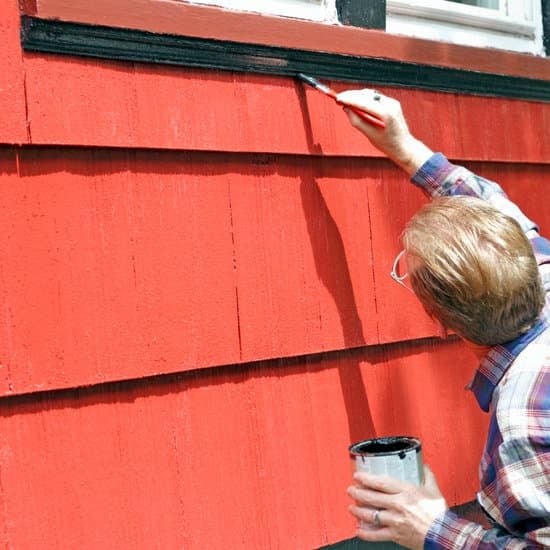Are you considering making improvements to your home? Before you start tearing down walls or installing new fixtures, it’s crucial to understand the potential tax benefits that may be available to you.
In this article, we will explore whether you can write off home improvements and how they can potentially contribute to increasing your property value. By knowing the ins and outs of tax deductions for home improvements, you can make informed decisions and maximize the benefits of your renovations.
Home improvements not only enhance the aesthetics and functionality of your living space but can also have a positive impact on your finances. Many homeowners may not realize that certain improvements can potentially be eligible for tax write-offs. Understanding how this works can save you money in the long run while adding value to your property.
It’s important to note that not all home expenses are considered eligible for tax deductions. The key is differentiating between repairs and improvements, as they have different implications when it comes to taxes. In the following sections, we will delve into this distinction and provide examples of common repairs versus improvements. Keep reading to gain a clearer understanding of what qualifies for potential tax deductions when it comes to enhancing your home.
Differentiating Between Home Repairs and Home Improvements
When it comes to determining if you can write off home improvements for tax benefits, it is essential to understand the distinction between home repairs and home improvements. The Internal Revenue Service (IRS) treats these two types of expenses differently when determining eligibility for tax deductions. By clarifying this distinction, homeowners can properly categorize their expenses and potentially maximize their deductions.
Understanding Repairs
Repairs generally refer to any actions taken to fix or restore something that is broken, damaged, or in a state of disrepair. These are considered necessary expenses for the maintenance and upkeep of a property. Examples of common repairs include fixing a leaky roof, repairing broken windows, or replacing worn-out flooring. These repairs typically aim to keep the property in its original condition rather than enhance its value.
It is important to note that while home repairs may not be eligible for direct tax deductions, they can still indirectly impact your taxes by reducing the capital gains tax when you sell your property. Keeping track of these repair expenses is crucial as they will be factored into the cost basis when calculating potential capital gains taxes upon selling the property.
Distinguishing Improvements
On the other hand, home improvements go beyond mere repairs and involve making substantial upgrades or additions that enhance the value, efficiency, or functionality of a property. These improvements typically increase the market value of the property and provide long-term benefit to homeowners. Examples of common home improvements include adding a new room, renovating a kitchen or bathroom, installing energy-efficient windows or insulation, or upgrading heating and cooling systems.
The IRS considers eligible home improvements as assets with a useful life exceeding one year. This means that their costs can be recovered over time through depreciation allowances and potential tax benefits such as tax credits or deductions. It is crucial to maintain detailed records of all improvement expenses since they may qualify for tax deductions now or in the future when you sell the property.
Qualifying Criteria for Home Improvement Tax Deductions
When it comes to tax deductions for home improvements, not all projects will qualify. The Internal Revenue Service (IRS) has specific guidelines in place to determine whether or not a home improvement is eligible for a tax write-off. Understanding these criteria can help homeowners make informed decisions about which improvements to pursue and potentially save money on their taxes.
To qualify for a tax deduction, a home improvement must meet certain requirements set by the IRS. One of the key criteria is that the improvement must be considered a “capital improvement” rather than a repair. Capital improvements are those that add value to the property or prolong its useful life, while repairs simply fix or maintain existing components of the home.
Additionally, the IRS requires that the home improvement be made to the taxpayer’s primary residence. This means that upgrades made to secondary properties, such as vacation homes or rental properties, may not be eligible for tax deductions. It’s important to keep in mind that only taxpayers who itemize their deductions can claim these benefits, so homeowners should assess whether itemizing is beneficial compared to taking the standard deduction.
In order to claim a home improvement as a tax deduction, homeowners must also meet certain eligibility criteria regarding timing and purpose. The IRS states that the improvement must be “substantial” and “permanent” in nature, meaning it should have lasting effects on the property’s value or functionality. Furthermore, home improvements made for personal reasons rather than medical necessity or energy efficiency purposes generally do not qualify for tax deductions.
Overall, understanding the qualifying criteria set by the IRS is crucial for homeowners considering writing off their home improvements for tax benefits. Taking into account these guidelines can help individuals make informed decisions about which projects to pursue and how those projects may impact their taxes.
| Qualifying Criteria | Description |
|---|---|
| Capital Improvement | The improvement must add value or prolong the property’s useful life. |
| Primary Residence | The improvement must be made to the taxpayer’s primary residence. |
| Substantial and Permanent | The improvement should have lasting effects on the property’s value or functionality. |
| Purpose | Improvements made for personal reasons generally do not qualify for tax deductions. |
Examples of Tax-Deductible Home Improvements
One of the advantages of making home improvements is the potential tax benefits that homeowners may be eligible for. By understanding which home improvements can be written off, homeowners can maximize their tax deductions and potentially save money. This section will explore some examples of tax-deductible home improvements that homeowners can take advantage of.
Energy-efficient upgrades are one type of home improvement that may qualify for tax deductions. The government offers incentives for homeowners who invest in energy-efficient improvements such as solar panels, energy-efficient windows, or geothermal heating and cooling systems. These improvements not only help reduce energy consumption but also contribute to a greener and more sustainable environment.
Another example of tax-deductible home improvements includes modifications made to accommodate medical necessities. The IRS allows deductions for home improvements that are medically necessary and improve the quality of life for individuals with medical conditions or disabilities. This can include installing ramps, elevators, or modified bathrooms to provide accessibility within the home.
Home office renovations or additions can also be eligible for tax deductions if they are used exclusively for business purposes. Homeowners who have a dedicated space in their homes that is solely used as a home office may qualify for deductions related to the renovation or improvement of that space.
Overall, understanding which home improvements are tax-deductible is essential for homeowners looking to make the most out of their investments. By taking advantage of these deductions, homeowners can enjoy both the immediate benefits of their improved living spaces and potential long-term financial advantages as well.
| Examples of Tax-Deductible Home Improvements | Tax Benefits |
|---|---|
| Energy-efficient upgrades (e.g., solar panels, energy-efficient windows) | Incentives from government and reduced energy consumption |
| Modifications for medical necessities (e.g., ramps, elevators, modified bathrooms) | Improved quality of life and accessibility |
| Home office renovations or additions | Deductions for space used exclusively for business purposes |
Limitations and Restrictions on Home Improvement Tax Deductions
Personal Use Restrictions
One important limitation to consider when it comes to home improvement tax deductions is the restriction on personal use. According to the IRS guidelines, if you make improvements to your primary residence solely for personal use and enjoyment, those expenses are not eligible for tax deductions.
This means that renovations or upgrades done purely for aesthetic purposes, such as adding a swimming pool or a home theater system, cannot be written off. However, if you utilize a portion of your home for business purposes or if you rent out a part of your property, there may be certain deductions available.
Rental Properties and Home Office Deductions
If you own rental properties or operate a business from your home, different rules apply. In the case of rental properties, any improvements made that directly benefit the tenants can generally be claimed as deductible expenses.
Examples include repairing broken fixtures or upgrading appliances in the rental unit. For homeowners who have a dedicated space within their homes used exclusively for business purposes-such as a home office-the expenses related to improvements made to that area may also qualify for deductions.
It is worth noting that with both rental properties and home office deductions, it’s essential to keep detailed records and accurately allocate expenses between personal use and income-generating activities. Consulting with a tax professional specializing in real estate or small business taxes can help ensure compliance with IRS regulations while maximizing eligible deductions.
Improvements Not Increasing Property Value
Another important factor affecting the eligibility of home improvement tax deductions is whether the improvements actually increase the value of the property. While many upgrades improve livability, comfort, or energy efficiency, they may not necessarily contribute significantly to the overall value of the home in terms of fair market appraisals.
For example, cosmetic enhancements like painting walls or replacing flooring usually fall under repairs rather than improvements since they are considered routine maintenance tasks. These repairs are generally not eligible for tax deductions. However, if you make an improvement that provides substantial value appreciation, such as installing a new roof or upgraing to energy-efficient windows, it may qualify for a tax write-off.
It’s crucial to understand these limitations and restrictions imposed by the IRS to ensure you are aware of which home improvements are eligible for tax deductions. By knowing the specific criteria and keeping detailed records, homeowners can optimize their potential tax benefits while complying with the tax regulations. Remember, consulting with a qualified tax professional is always advisable to navigate this complex area effectively.
Keeping Track of Expenses for Home Improvements
When it comes to claiming tax deductions for home improvements, one of the most crucial steps is keeping track of all your expenses. Accurate and detailed records will not only make it easier for you to claim deductions but also serve as essential documentation in case of an audit. To ensure a smooth and hassle-free process, here are some tips on how homeowners can keep track of their expenses for home improvements:
1. Organize Receipts and Invoices: It is vital to maintain a well-organized system for storing receipts and invoices related to your home improvement projects. Create physical or digital folders to categorize and store these documents by project or expense type.
2. Maintain a Spreadsheet: Utilize a spreadsheet software like Microsoft Excel or Google Sheets to record all relevant information about your home improvement expenses. Include details such as the date, vendor, description of work or items purchased, amounts paid, and payment method.
3. Take Before and After Photos: Alongside your records, taking before and after photos can provide visual evidence of the improvements made in case they are required during an audit or when substantiating your claims.
4. Utilize Expense Tracking Apps: There are numerous smartphone apps available that specifically cater to expense tracking for homeowners. These apps allow you to take photos of receipts, categorize expenses, create reports, and even export data directly into tax preparation software.
5. Create a Home Improvement Journal: Consider maintaining a dedicated journal where you can jot down notes about each improvement project as it progresses. This journal can include details like the purpose of the improvement, any challenges faced during the process, changes in property value, or potential energy savings achieved.
By implementing these practices for keeping track of expenses, homeowners can streamline their tax deduction process while ensuring accuracy and compliance. It is essential to remember that maintaining thorough records will not only benefit you during tax season but also provide valuable information for future reference and property valuation purposes.
Consulting with a Tax Professional
Navigating the complex tax codes when it comes to home improvement tax deductions can be a daunting task for homeowners. To ensure that you take full advantage of available tax deductions and understand the specific regulations, it is highly recommended to consult with a tax professional. Here’s why seeking professional advice is essential:
- Expertise in Tax Laws: Tax professionals have extensive knowledge of the ever-changing tax laws and regulations. They stay updated on the latest legislation and have a deep understanding of how these laws apply to different situations. By consulting with a tax professional, you can gain valuable insights into specific tax codes related to home improvements.
- Maximizing Deductions within Legal Boundaries: The IRS guidelines for home improvement deductions are intricate, and it’s easy to inadvertently make mistakes or miss out on potential deductions. A tax professional can help you navigate through these complexities while identifying all eligible deductions based on your unique circumstances. They can guide you in maximizing your deductions within legal boundaries, ensuring compliance and minimizing the risk of audits.
- Peace of Mind: Making decisions about home improvements and taxes can be stressful, especially when dealing with the intricacies of the IRS rules. Consulting with a tax professional provides peace of mind knowing that you are following the correct procedures and taking full advantage of any available tax benefits related to your home improvements.
When selecting a tax professional, look for someone experienced in handling real estate transactions and knowledgeable about current IRS guidelines for home improvement deductions. They should be able to provide guidance specific to your situation and offer tailored advice that takes into account your financial goals and objectives.
Remember, while consulting with a tax professional is crucial, it’s also important to educate yourself about the basics of home improvement deductions so that you can actively participate in discussions and make informed decisions regarding your taxes.
By working alongside a trusted tax professional, homeowners can navigate through complex tax codes confidently, ensuring they are taking full advantage of available tax deductions for their home improvements.
Other Potential Benefits of Home Improvements
Home improvements not only have the potential for tax benefits, but they can also provide a range of other advantages for homeowners. These additional benefits go beyond financial incentives and contribute to making homes more energy-efficient, comfortable, and enjoyable to live in.
One significant benefit of home improvements is increased energy efficiency. Many homeowners choose to upgrade their homes with energy-efficient appliances, windows, insulation, or HVAC systems. These upgrades can lead to substantial energy savings over time and lower utility bills. Additionally, making environmentally friendly choices can help reduce the carbon footprint of a home and contribute to a more sustainable future.
Another advantage of home improvements is improved comfort. Upgrading outdated or inefficient fixtures can make living spaces more comfortable by regulating temperature, reducing noise levels, or enhancing indoor air quality. For example, installing a smart thermostat allows homeowners to easily control the temperature in their home for optimal comfort year-round.
Furthermore, home improvements can enhance the overall livability of a property. This could include adding additional living space through an extension or renovating existing rooms for better functionality. Whether it’s creating a dedicated home office, transforming a basement into an entertainment area, or updating the kitchen to be more spacious and modern, these improvements can significantly improve the quality of life for homeowners and their families.
It is important for homeowners to consider these potential benefits alongside any tax deductions they may be eligible for when planning their home improvement projects. By prioritizing both financial advantages and non-monetary gains, homeowners can maximize the value they receive from their investment in improving their property.
Conclusion
In conclusion, understanding the potential tax benefits of home improvements is crucial for homeowners who want to maximize their deductions. By differentiating between repairs and improvements and knowing the qualifying criteria for tax deductions, homeowners can ensure that they meet the necessary guidelines. It is also important to be aware of the limitations and restrictions imposed by the IRS, such as personal use or improvements that do not increase property value.
Keeping track of expenses for home improvements is essential in order to ease the tax deduction process. Homeowners should maintain thorough records of their expenses and consider using apps or software solutions that can help track and categorize expenses efficiently.
However, navigating complex tax codes can be challenging, which is why it is highly recommended to consult with a tax professional. A tax expert can provide guidance on specific tax regulations and assist in maximizing deductions within legal boundaries.
Aside from potential tax benefits, home improvements offer additional advantages such as energy savings, increased comfort, and enhanced livability. Therefore, homeowners should thoroughly research available tax deductions and consult professionals to ensure they take full advantage of all potential benefits for their home improvements.
Frequently Asked Questions
Can you write off home improvements on taxes?
Homeowners often wonder if they can write off home improvements on their taxes as a way to offset some of the costs. Unfortunately, the answer is not always straightforward. In general, you cannot deduct the cost of home improvements directly from your taxes.
However, there are certain circumstances where you may be eligible for tax benefits related to home improvements. For example, if you make qualifying improvements that increase the energy efficiency of your home, such as installing solar panels or energy-efficient windows, you may be able to claim a tax credit for a portion of the expenses incurred. Additionally, if you use a portion of your home exclusively for business purposes, you might be able to deduct a percentage of the improvement costs as a business expense.
Can you write off all home improvements?
While it would be nice if all home improvements were tax-deductible, this is not usually the case. Most ordinary repairs and maintenance costs are not deductible since they are considered part of regular homeownership responsibilities. However, it’s essential to distinguish between repairs and improvements when considering potential tax deductions.
Improvements that add value or extend the useful life of your property may qualify for some tax benefits in specific situations. For instance, if you install a new roof or upgrade your electrical system with an aim to substantially improve your home’s condition or value in ways that aren’t merely cosmetic changes, there could be certain tax benefits available.
What are the tax breaks for home improvements in 2023?
As this response is being generated in 2022, specific details about tax breaks for home improvements in 2023 are unavailable at this time. Tax regulations and laws can change annually based on numerous factors, including political decisions and economic conditions.
Therefore, it’s crucial to consult with a qualified tax professional or refer to official IRS publications for accurate and up-to-date information on potential tax breaks for home improvements in 2023 when it becomes available closer to that time period. Being aware of any changes in regulations will enable homeowners to make informed decisions about their investments in home improvements and determine any potential tax advantages they may be entitled to.

I’m thrilled to have you here as a part of the Remodeling Top community. This is where my journey as an architect and remodeling enthusiast intersects with your passion for transforming houses into dream homes.





